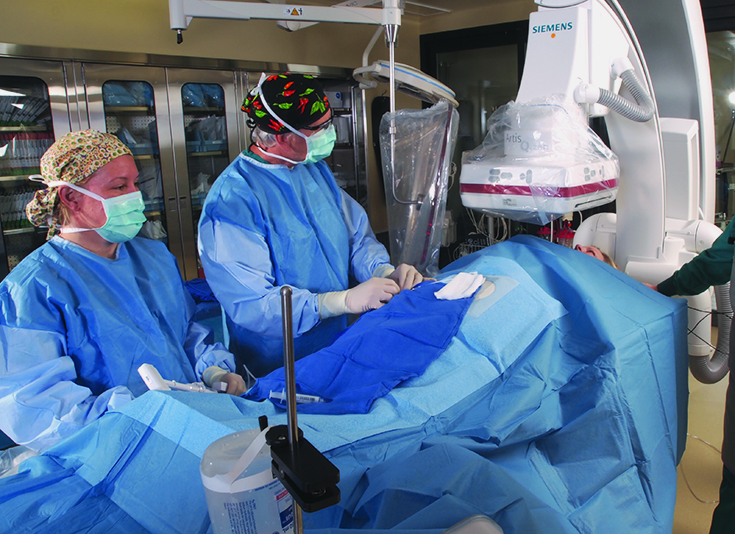Cardiac Cath Lab Saves Lives in its First Year
- Posted On:

If it were not for the winning combination of the Cardiac Cath Lab and Mission:Lifeline—a program that equips ambulances with EKGs—Ron Burkart (66) knows his heart attack story might have ended differently.
“The doctor said I was lucky. He said I had a tombstone heart rhythm when I arrived and didn’t have much time left,” says Ron.

Ron was on his way to a work site near Antelope mine from his home in Torrington when he “broke out in a cold sweat” and felt like he wanted to “crawl out of his skin.” A work-site ambulance rushed him to a waiting CCH ambulance in Wright.
“Immediately when I got in the CCH ambulance they hooked me up to an EKG machine and sent my results to Dr. Stamato who read them on his cell phone,” Ron adds.
Dr. Stamato was outside waiting and rushed Ron into the cath lab where he removed the clot and put in a coronary stent, saving his life.
In the past few years cardiac care in Gillette has made a quantum leap. In the past, heart attack patients were stabilized then transported to another hospital at least two hours away. Today, a good share of acute heart attacks can be treated right here at CCH.
“In one year’s time we’ve built up a leading-edge cardiac catheterization lab. It’s really been a whirlwind,” says Sheila Voelsch, Cath Lab Manager.
Often with heart attacks, a cath lab is the first stop. It’s where cardiologists like Dr. Sairav Shah and Dr. Nicholas Stamato quickly get to work and complete a catheterization procedure to assess and resolve the blockage.

Blocked arteries are usually opened by suctioning out blood clots or placing a stent—a tubular support rod that keeps the artery open, sometimes with the help of a balloon. The American Heart Association set national “door to balloon” times at 90 minutes for best outcomes.
“It’s very important to get an artery open fast to bring oxygen to the heart because time literally is heart muscle saved. We’ve averaged 60.58 minutes since we opened, but we’ve done it in as little as 23 minutes. Ron’s time was 29 minutes,” Voelsch adds.
The cath lab team is ecstatic about consistently beating the national standard. Patients and families express their gratitude for the cath lab, which treated 309 patients in its first year.
“We know we are giving patients the best possible outcome, and that gives them a better chance at life,” she concludes.
“I wish CCH was closer to my home here in Torrington. I was so impressed by their fast action and expertise. I know they gave me a new life, and I’m going treat it as that,” Burkart exclaims.
Quick Facts: Cath Lab
- Open 24/7
- Better than national average door-to-treatment times
- Treats a variety of cardiac conditions
- Completes studies including electrophysiology (EP), which test electrical signals of the heart and allows for pacemaker implantation and cardiac ablation

Mission Lifeline: EMS Earns Award for Fast Action with Heart Attacks
Mission:Lifeline save lives by empowering ambulance crews to send EKG test results on the way to the hospital where a cardiac team is waiting. A team of 46 Emergency Medical Services (EMS) staff are available from two stations, one in Gillette and one in Wright. For their incredible work implementing Mission: Lifeline, the CCH Emergency Medical Services team received an EMS Bronze Level Recognition Award from the American Heart Association (AHA).
Mission: Lifeline is funded through the AHA and the Leona M. and Harry B. Helmsley Charitable Trust, which teamed up to provide $7.1 million toward improving heart attack care in Wyoming. Other contributors include First Interstate Bank and The Wyoming Community Foundation.


